Assessment of Deep and Shallow Geothermal Resources and Measurement of Waste Heat Potentials from Industrial Processes for Supplying Renewable Heat for Industry and Urban Quarters
Abstract
:1. Introduction
1.1. Decarbonisation of Industry with Geothermal Energy
1.2. Low-Temperature Heating and Cooling Grids (LTHC)
1.3. Investigated Sites
1.3.1. High-Temperature Use—NÖM Dairy Plant
1.3.2. Low-Temperature Use—Former Military Camp “Martinek-Kaserne”
1.4. Scenarios for Geothermal Energy Use for the Investigated Sites
2. Materials and Methods
2.1. Hydrogeological and Geothermal Site Information
2.1.1. Deep Geothermal Resources
- i.
- Identification of suitable reservoirs
- ii.
- Evaluation of the geometry of potential reservoirs
- iii.
- Assessment of mountain temperature
- iv.
- Evaluation of the productivity of the deposit
- v.
- Assessment of water chemistry
- vi.
- Evaluation of the energy content and indication of the forecast uncertainties
- Required temperature level of use
- Required power range (required geothermal mass flow of the doublet)
- Topographical situation: location of the user, location of restricted areas (protected areas).
2.1.2. Shallow Geothermal Resources
2.2. Energy Analysis of the Dairy NÖM
- Waste heat from the off-gas stream of the steam boiler plant
- Wastewater from the various cleaning processes
- Waste heat from cooling units
- Waste heat from air compressors (high pressure)
- Waste heat from heat storage tanks
3. Results
3.1. Deep Geothermal Potential and Reservoir Assessment
- Dachsteinkalk (DK): 3.091–4.011 m, thickness: 920 m
- Hauptdolomit (HD): 4.011–4.663 m, thickness: 650 m
- Wettersteindolomit: 4.843–5.548 m, thickness: 710 m
- Dachstein limestone (DK): 100 °C to 129 °C
- Hauptdolomit (HD): 129 °C to 146 °C
- Wettersteindolomit (WD): 151 °C to 172 °C.
3.2. Hydrogeological 3D Model and Shallow Geothermal Potential
3.3. Waste Heat Potentials at the NÖM Dairy Plant
3.3.1. Wastewater
3.3.2. Off-Gas Stream of the Steam Boiler Plant
3.3.3. Waste Heat from the Drycoolers of the Cooling System for Fresh Products Logistics (FRILO)
3.3.4. Waste Heat Potential from the Heat Recovery of the Stratified Storage Tank
3.3.5. Waste Heat from the Cooling Circuit of High-Pressure Compressed Air Generation
4. Discussion
4.1. Assessment of Deep Geothermal Potential
4.2. Dimensioning of the Borehole Heat Exchanger Field for Seasonal Thermal Storage
4.3. Waste Heat Potentials from the NÖM Dairy Plant
5. Conclusions
Author Contributions
Funding
Institutional Review Board Statement
Informed Consent Statement
Data Availability Statement
Acknowledgments
Conflicts of Interest
References
- Lund, H.; Werner, S.; Wiltshire, R.; Svendsen, S.; Thorsen, J.E.; Hvelplund, F.; Mathieses, B.V. 4th Generation District Heating (4 GDH): Integrating smart thermal grids into future sustainable energy systems. Energy 2014, 68, 1–11. [Google Scholar] [CrossRef]
- Lund, R.; Østergaard, D.S.; Yang, X.; Mathiesen, B.V. Comparison of Low-temperature District Heating Concepts in a Long-Term Energy System Perspective. Int. J. Sustain. Energy Plan. Manag. 2017, 12, 5–18. [Google Scholar]
- Rögl, F.; Ćorić, S.; Harzhauser, M.; Jimenez-Morenos, G.; Kroh, A.; Schultz, O.; Wessely, G.; Zorn, I. The Middle Miocene Badenian stratotype at Baden-Sooss (Lower Austria). Geol. Carpathica 2008, 59, 367–374. [Google Scholar]
- Elster, D.; Goldbrunner, J.; Wessely, G.; Niederbacher, P.; Schubert, G.; Berka, R.; Philippitsch, R.; Hörhan, T. Erläuterungen zur geologischen Themenkarte Thermalwasser in Österreich 1:500.000; Geologische Bundesanstalt: Wien, Austria, 2016; 296p. [Google Scholar]
- Wessely, G. Geologie der Österreichischen Bundesländer: Niederösterreich; Geologische Bundesanstalt: Wien, Austria, 2006; 416p. [Google Scholar]
- BMLFUW; Abteilung IV/3 Nationale und Internationale Wasserwirtschaft. Erhebung der Wassergüte in Österreich gemäß Gewässerzustandsüberwachungsverordnung (GZÜV) BGBl. I Nr. 479/2006; Ämter der Landesregierungen: Wien, Austria, 2006. [Google Scholar]
- PVGIS Photovoltaic Geographical Information System. Available online: https://joint-research-centre.ec.europa.eu/pvgis-photovoltaic-geographical-information-system_en#AT (accessed on 8 April 2022).
- Wagreich, M.; Pervesler, P.; Kathun, M.; Wimmer-Frey, I.; Scholger, R. Probing the underground at the Badenian type locality: Geology and sedimentology of the Baden-Sooss section (Middle Miocene, Vienna Basin, Austria). Geol. Carpathica 2008, 59, 375–394. [Google Scholar]
- Wessely, G.; Ćorić, S.; Rögl, F.; Draxler, I.; Zorn, I. Geologie und Paläontologie von Bad Vöslau (Niederösterreich). Jb. Geol. 2007, 147, 419–448. [Google Scholar]
- Gegenhuber, N. Interpretation der Faziellen und Hydrogeologischen Verhältnisse des Raumes Baden/Bad Vöslau Aufgrund von Bohrlochmessungen und Seismischen Profilen. Magisterarbeit; Montanuniversität Leoben: Leoben, Austria, 2007. [Google Scholar]
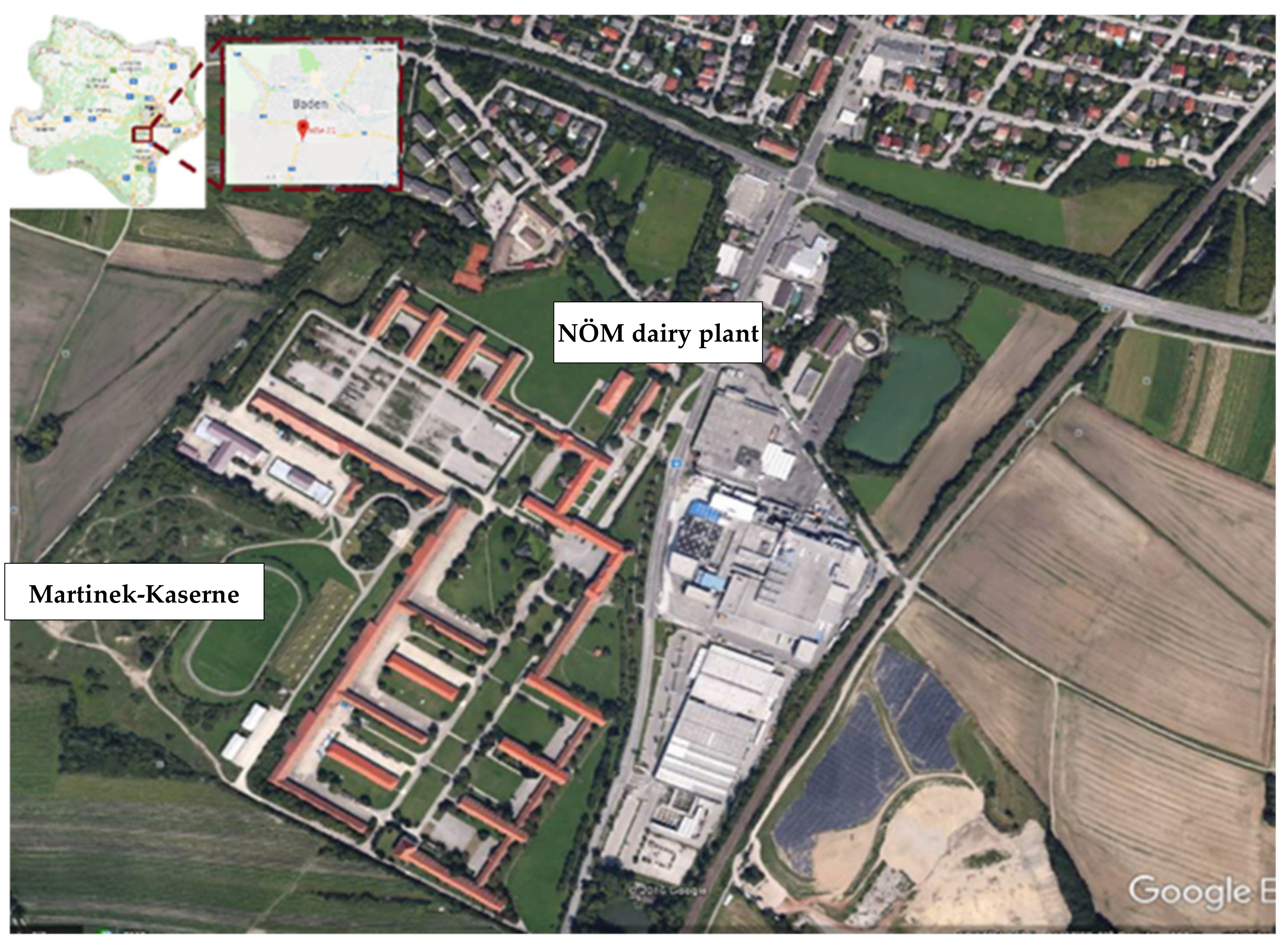
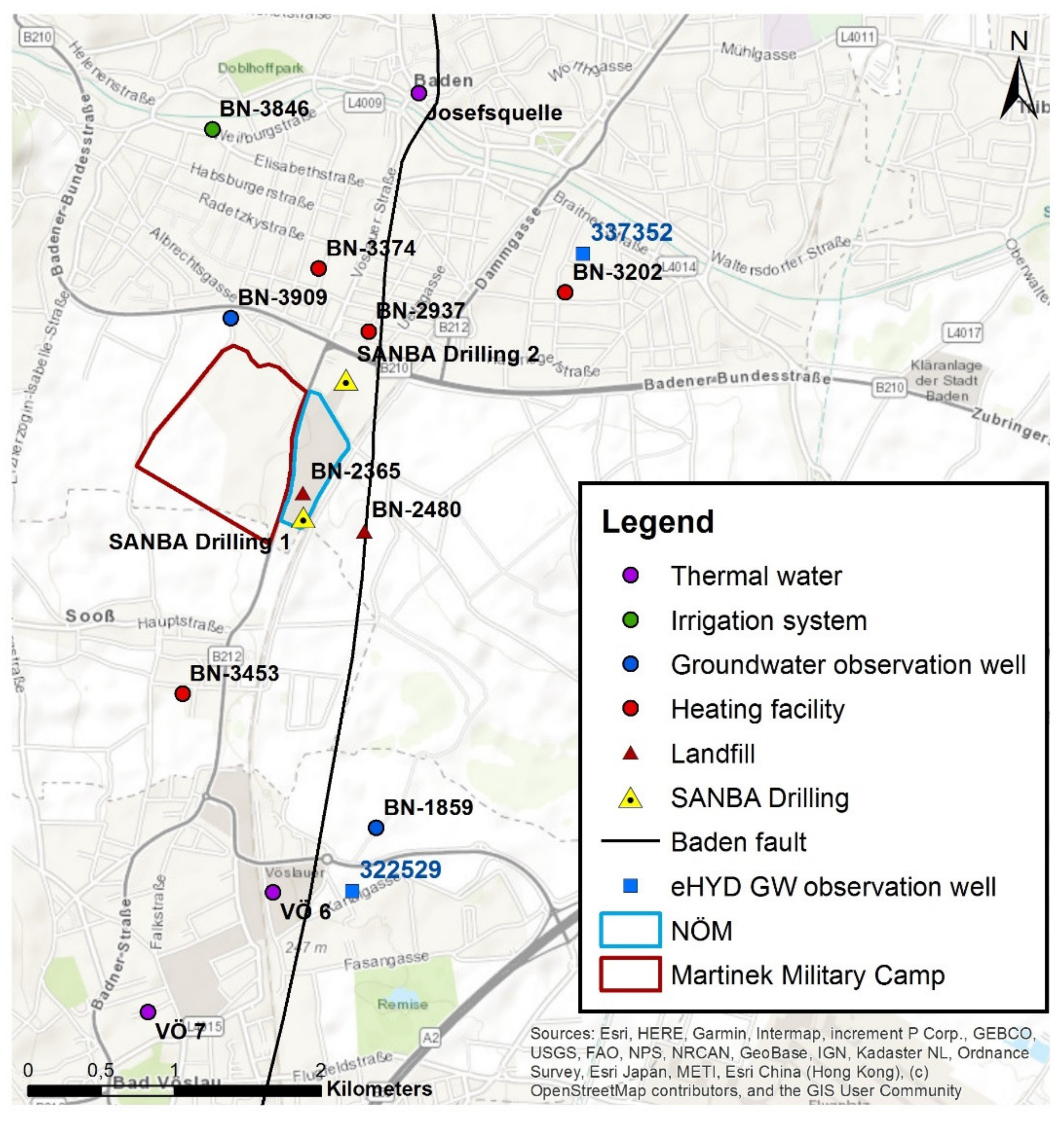
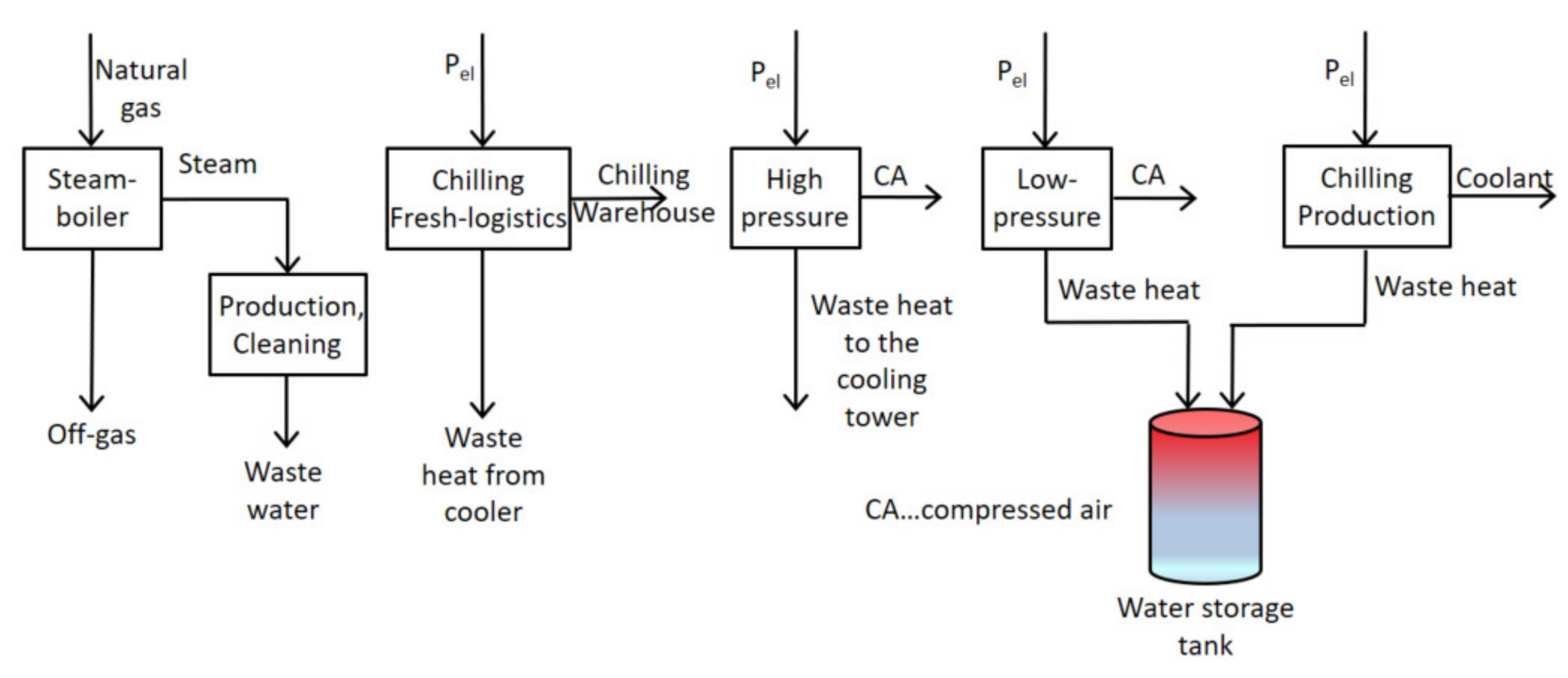
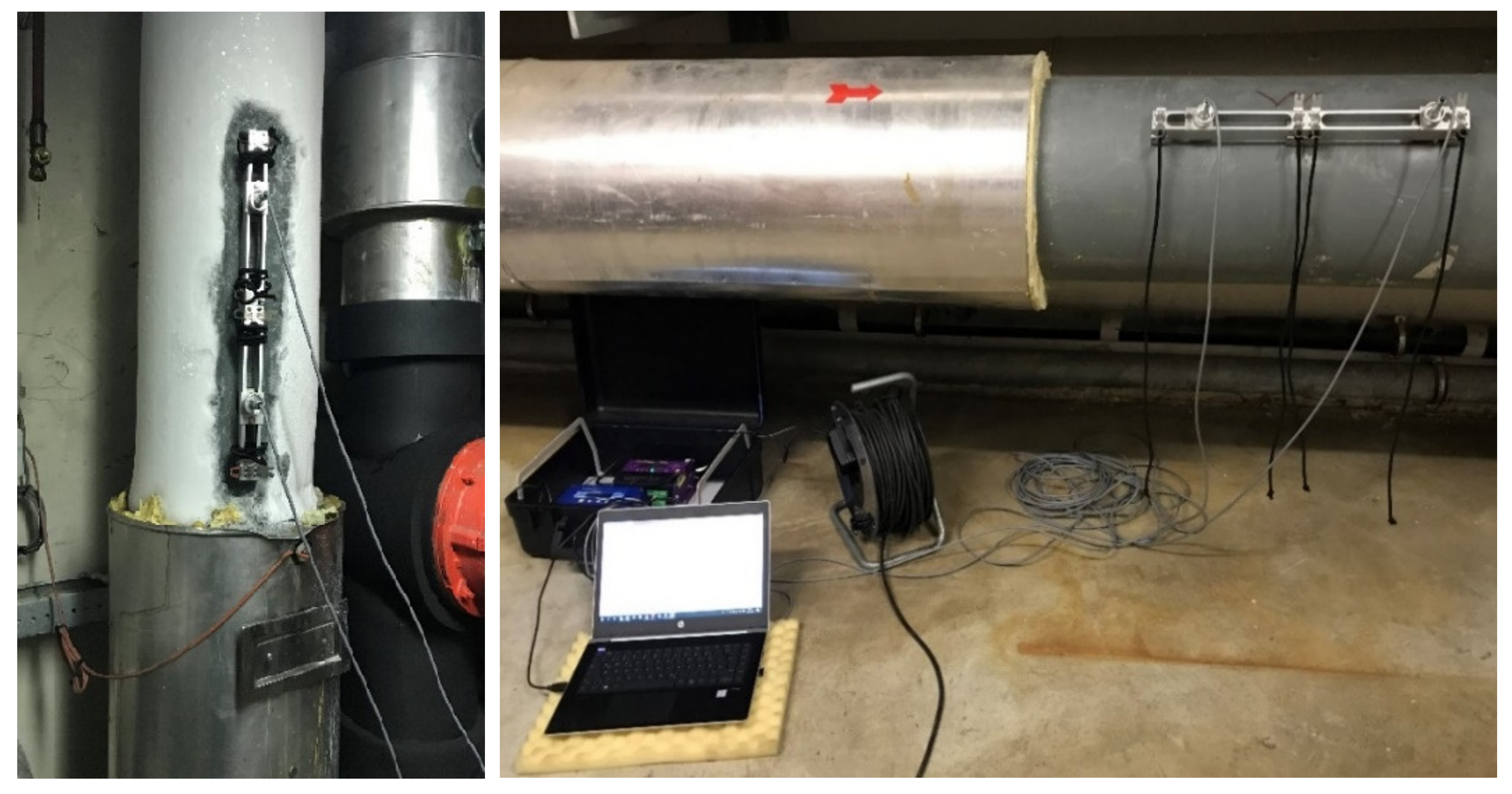
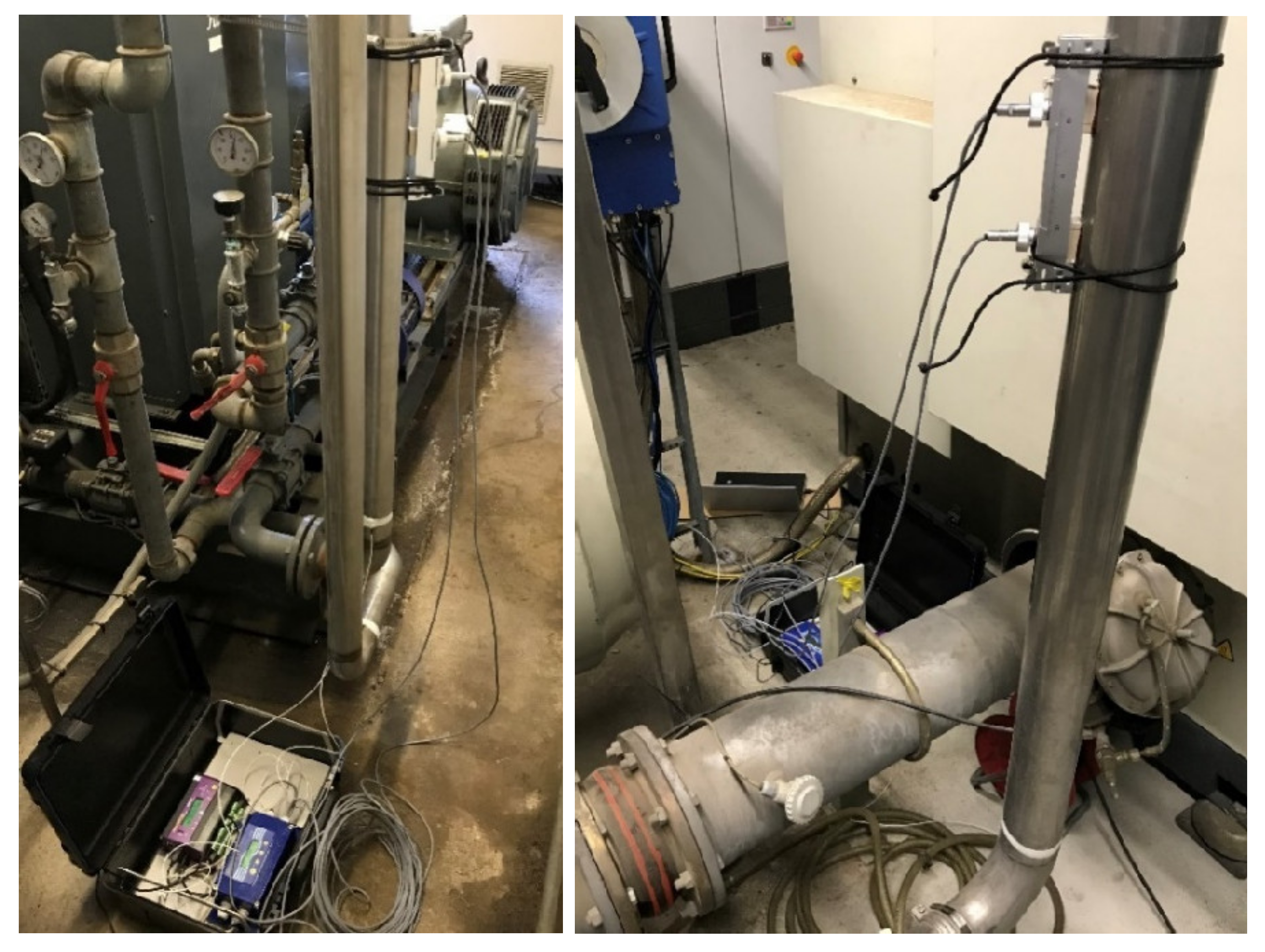

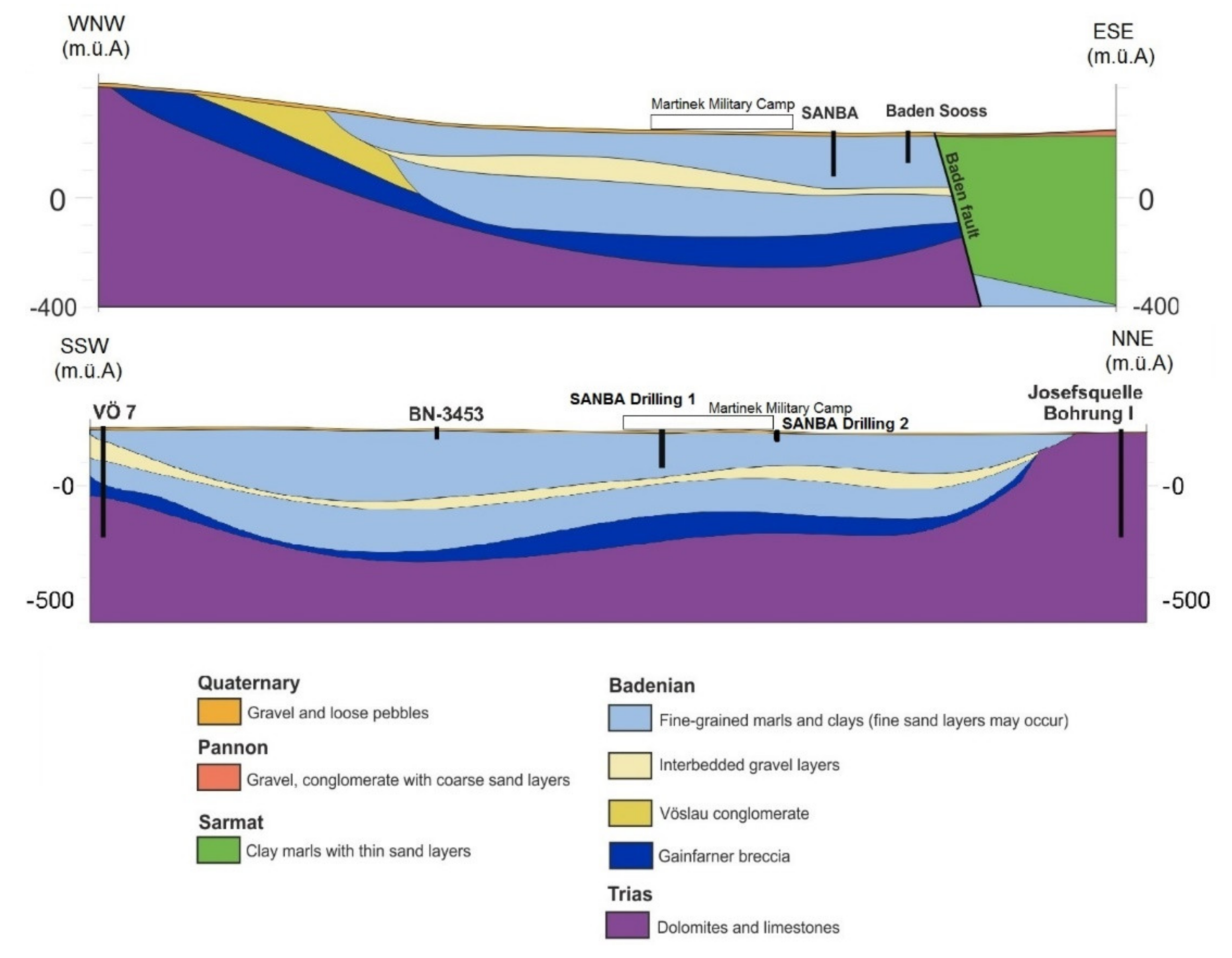

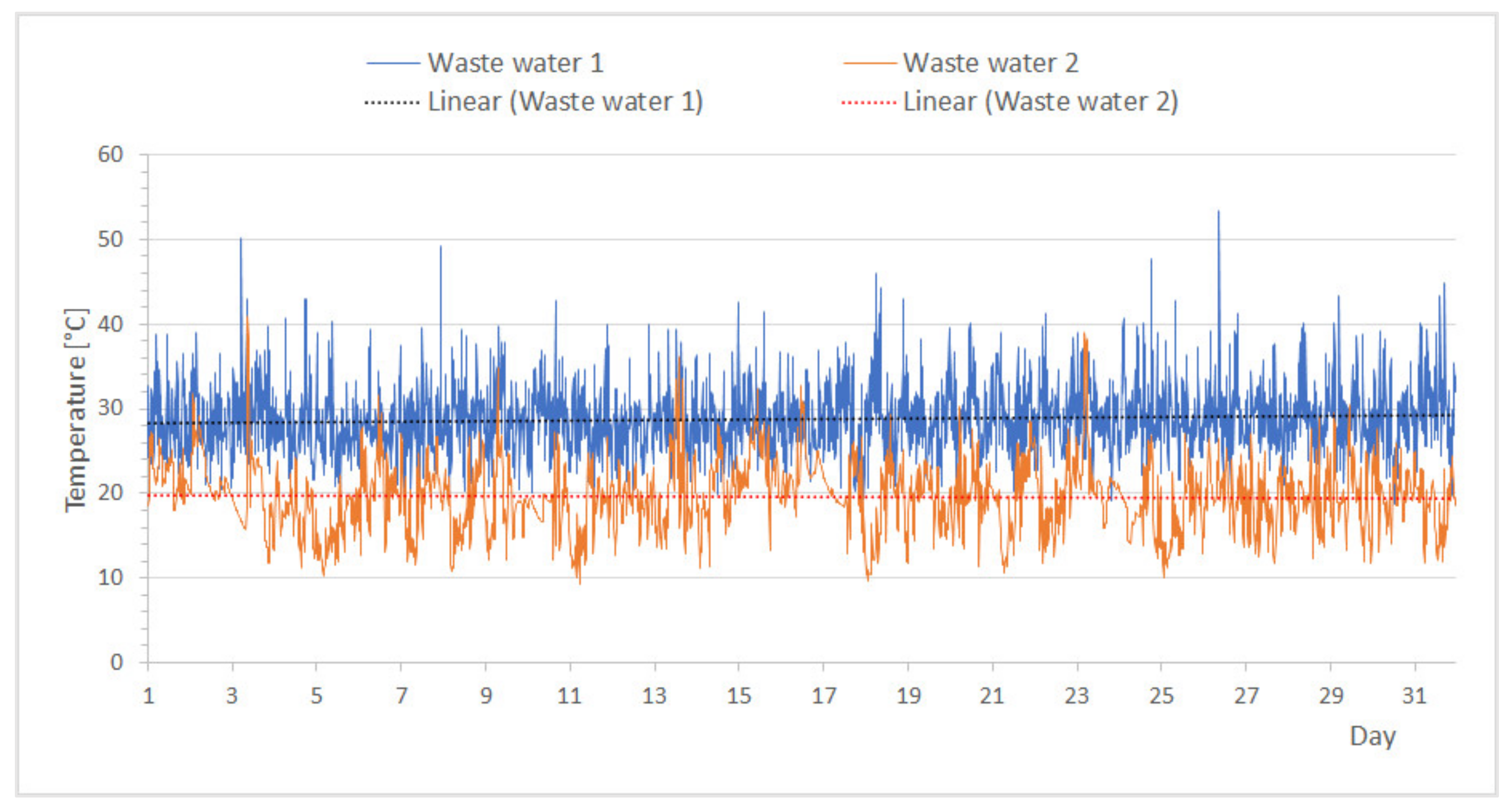



| Temperature [°C] | Mass Flow [l/s] | |
|---|---|---|
| Min. temperature in reservoir | 125–135 | - |
| Min. temperature at wellhead | 125 | - |
| Reinjection temperature | 65 | - |
| Required mass flow | - | 57 |
| Reservoir | Depth Below Surface [m] | Prospected Temperatures [°C] | Estimated Probability of Success |
|---|---|---|---|
| Dachsteinkalk | 3.091–4.011 | 100 °C–129 °C | 30% |
| Hauptdolomit | 4.011–4.663 | 129 °C–146 °C | 60% |
| Wetterstein Dolomit | 4.843–5.548 | 151 °C–172 °C | 70% |
| Plant | Low Temperature Waste Heat Compared to Energy Input [%] | Temperature Level [°C] | Exergy Share of Waste Heat [%] |
|---|---|---|---|
| Cooling system product logistics | 7.3 | 23–40 | 3–8 |
| High pressure air generation | 1.6 | 25–50 | 6–11 |
| Steam boiler | 4.0 | 60–70 | 13–17 |
| Heat recovery storage tank | 1.1 | 70–75 | 16–19 |
| Wastewater (reference 25 °C) | 5.3 | 27–34 | 5–7 |
| Total | 19.4 |
Publisher’s Note: MDPI stays neutral with regard to jurisdictional claims in published maps and institutional affiliations. |
© 2022 by the authors. Licensee MDPI, Basel, Switzerland. This article is an open access article distributed under the terms and conditions of the Creative Commons Attribution (CC BY) license (https://creativecommons.org/licenses/by/4.0/).
Share and Cite
Haslinger, E.; Turewicz, V.; Hammer, A.; Götzl, G. Assessment of Deep and Shallow Geothermal Resources and Measurement of Waste Heat Potentials from Industrial Processes for Supplying Renewable Heat for Industry and Urban Quarters. Processes 2022, 10, 1125. https://doi.org/10.3390/pr10061125
Haslinger E, Turewicz V, Hammer A, Götzl G. Assessment of Deep and Shallow Geothermal Resources and Measurement of Waste Heat Potentials from Industrial Processes for Supplying Renewable Heat for Industry and Urban Quarters. Processes. 2022; 10(6):1125. https://doi.org/10.3390/pr10061125
Chicago/Turabian StyleHaslinger, Edith, Veronika Turewicz, Andreas Hammer, and Gregor Götzl. 2022. "Assessment of Deep and Shallow Geothermal Resources and Measurement of Waste Heat Potentials from Industrial Processes for Supplying Renewable Heat for Industry and Urban Quarters" Processes 10, no. 6: 1125. https://doi.org/10.3390/pr10061125
APA StyleHaslinger, E., Turewicz, V., Hammer, A., & Götzl, G. (2022). Assessment of Deep and Shallow Geothermal Resources and Measurement of Waste Heat Potentials from Industrial Processes for Supplying Renewable Heat for Industry and Urban Quarters. Processes, 10(6), 1125. https://doi.org/10.3390/pr10061125







